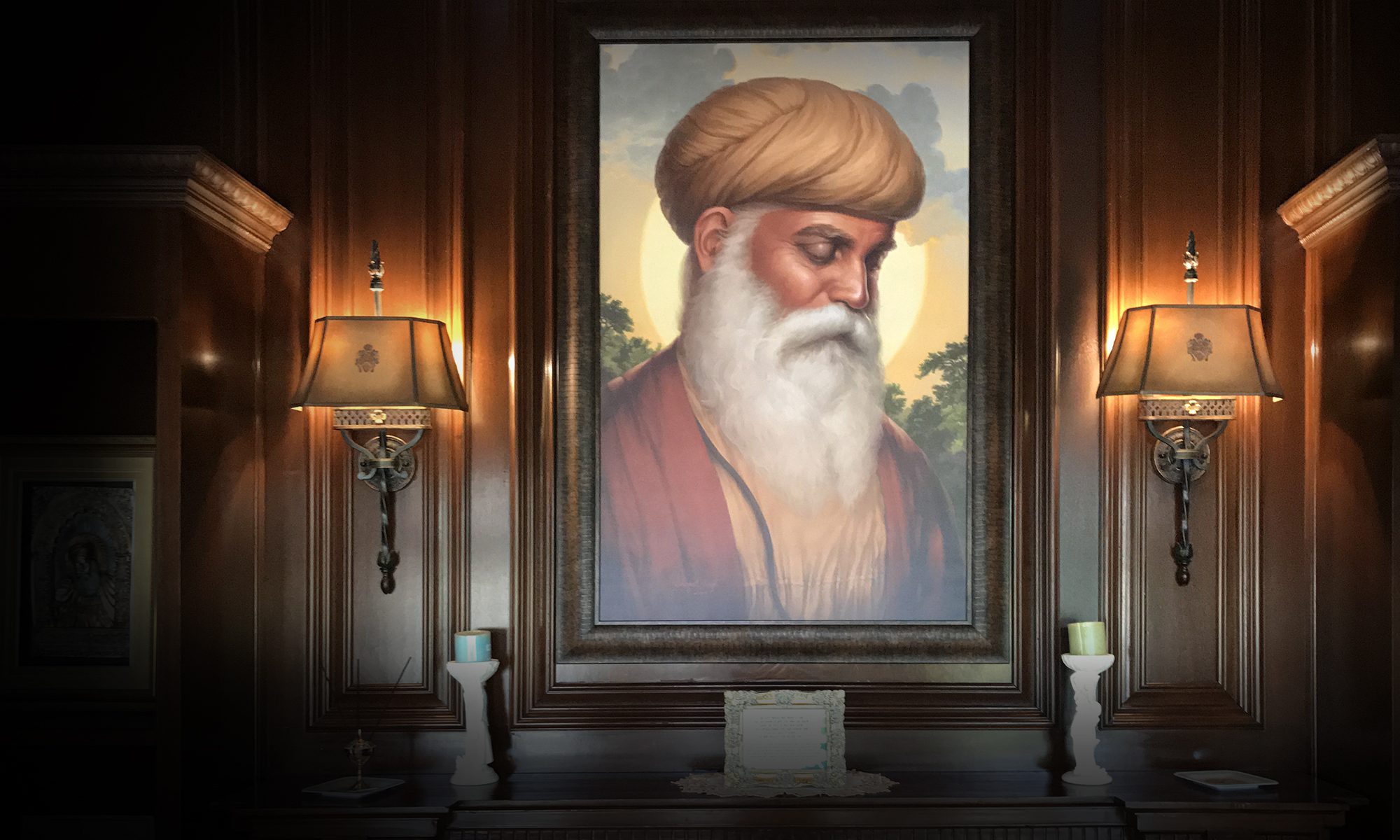Artist's Notes
“A warrior eradicates the bad within himself. Then the bad cannot touch him.”
– Guru Arjun Dev ji (Guru Granth Sahib, 258)
My painting depicts Bhai Bachittar Singh ji’s heroic feat of defending the Lohgarh Fort by defeating the war elephant of Kesari Chand. Guru Gobind Singh ji selected one of his best warriors to oppose the elephant and gave him a Nagni Barcha to pierce the elephant’s armour. He not only pierced the armour but also drove the elephant back into the opposing forces.
Other paintings show this scene disconnected from the surrounding warfare. I wanted to tie it all together and depict the full battle at Lohgarh Fort.
Warriors are getting slaughtered on the field, falling alongside their horses. Arrows are exchanged between the clashing armies. The battle standards flare in the sky. Battle-drums are beaten on camel-back. On both sides, the warriors shout battle-cries as they enter the battle-field and come face-to-face with death.
—
During the Battle of Anandpur, the Mughals and the Kings of Northern India, Hill Chiefs, had laid siege to the city of Anandpur Sahib where Guru Gobind Singh ji was staying. They attacked the surrounding forts then set their sights on Qila Lohgarh. The Singhs came to Guru Sahib and to inform him that Kesari Chand was planning on attacking the fort with a war-elephant.
An elephant is a powerful animal, capable of destroying forests. When man exploited this animal, he realized that he too could use this power against others. Many animals were exploited in warfare, but none of their power compared to the elephant.
Elephants were mostly peaceful giants, however during mating period the males became aggressive and competitive. During warfare, elephants were given alcohol to arouse this type of aggression, to rid them of their inhibitions and to make them more violent.
They were often but not always, equipped with armour and weapons. There were often but not always, guided by a handler, Mahout, and other soldiers around the elephant. They were often but not always, defended by soldiers on foot and horse-back that surrounded the elephant and made it impossible to breakthrough to counter-attack the elephant.
Elephants had such a terrifying appearance, that even horses would be frightened of them. The psychological intimidation made elephants even harder to fight.
At first Guru Gobind Singh ji selected Duni Chand, whose ancestors had served in the making of Harimandir Sahib. However Duni Chand did not see this ending well, and so advised Guru Sahib to surrender. He later left the fort altogether, with his troops.
Guru Gobind Singh ji looked at his body-guards, his special forces. The son of Bhai Mani Singh ji was amongst one of them. He was tall, his were arms powerful, and he was very handsome. He was highly skilled with spears. He was sitting in bliss, ready to fight, armed with five weapons. He was waiting for Guru Ji’s signal.
Guru ji asked a servant to bring out his best weapons, amongst them was the serpentine spear, Nagni Barcha. He gave Bhai Bachittar Singh ji the Nagni Barcha to pierce the elephant’s armour-plates. Bhai Bachittar Singh ji bowed to the Nagni Barcha and then wielded it, feeling his own power grow. He then bowed to his horse and mounted it.
Other Singhs were sent with him, as well. One of which was Bhai Sahib’s brother Bhai Udai Singh ji, who was tasked with assassinating Kesari Chand himself. They all rode to Lohgarh fort to reinforce Lohgarh’s defences.
To break the gates of the Lohgarh Fort, Kesari Chand brought a war-elephant with him. Battle-drums and footsteps echoed through the land, swords and spears glistened, as the armies descended on the fort.
The defenders of Lohgarh were ready to fight.
The elephant charged in, the sight of which brought fear to the hearts of many warriors on the field. This elephant was charging towards the gates of the fort, accompanied by charging cavalrymen. Large drums mounted on camel-back were beaten to inspire the warriors. Amongst the beats, the roars of war-cries were heard. Amongst the war-cries were cries of “Kill! Kill!”.
Soon the armies clashed. Muskets were fired. Arrows were discharged. Spears and swords cut through flesh. Blood splattered everywhere. Soldiers fell on the battlefield, killing then getting killed themselves. The battle-drums were beating in the battlefield, accompanied by horns and flutes. Any horseman that came near the elephant was killed. The warriors were struck with arrows and spears as this elephant caused chaos on the battlefield, flinging any soldiers in his path as if they were pillows, impaling others on his teeth, and trampling those on the ground.
Bhai Bachittar Singh ji was watching from a small window in the fort. When the elephant got close to the fort, Bhai Bachittar Singh ji knew it was time. He ordered that the fort’s gates be opened so that he could deal with the elephant. He told the others to take care of the soldiers, while he fought the elephant.
Amongst the falling warriors, Bhai Bachittar Singh ji charged towards the elephant, his horse flew towards the mountain-like elephant. As he got close, he stood on the horse and with his full body, he impaled the elephant’s forehead with the spear. The serpentine head of the spear penetrated the armour plates on the forehead and finally struck the forehead, causing the elephant to roar in pain. This stopped the elephant from attacking the gates of the fort. Then Bhai Bachittar Singh ji prodded the elephant until the elephant ran back trampling the enemy soldiers in his way, destroying their ranks and causing chaos in the enemy formations.
Bhai Bachittar Singh ji not only thwarted the attack but also caused a lot of damage to the army of the Mughal and Hill Chief alliance by directing the elephant back towards them.












Reviews
There are no reviews yet.